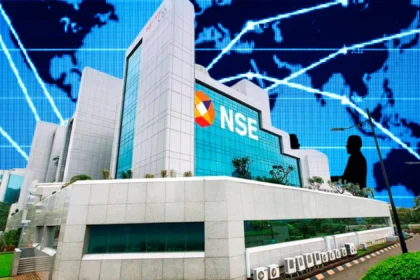The Reserve Bank of India has granted the payment aggregator license to Razor Pay, allowing the company to provide payment services for merchants. This license enables Razor Pay to accept payment instruments from customers and act as an intermediary. Initially, RBI had requested Razor Pay to pause onboarding new customers, causing some uncertainty. However, the final license has now been received, bringing relief and excitement to the company.
- The payment aggregator license grants Razor Pay the authority to provide payment services for merchants.
- This license allows Razor Pay to accept payment instruments from customers and act as an intermediary.
- RBI’s initial request to pause onboarding new customers caused some uncertainty for Razor Pay.
- The final license brings relief and excitement to Razor Pay, as it can now fully offer its services and gain the trust of merchants.
Impact on Business and Revenue
The obtaining of the payment aggregator license by Razor Pay has limited impact on the profit and loss statement due to onboarding small merchants. The majority of new merchants onboarded are small merchants that take some time to build up their revenue. Therefore, the impact on the profit and loss statement is actually quite limited. However, Razor Pay is able to manage this impact by offering other services, such as offline boss terminals and additional offerings on the Razor Payx side.
While the impact on the profit and loss statement is limited, the obtaining of the payment aggregator license has a significant impact on the morale of the team and small merchants. Payments is Razor Pay’s oldest and core focus area, and not being able to onboard small merchants resulted in a high number of complaints and questions from these merchants. Therefore, the approval from RBI and the ability to onboard small merchants is a top priority for Razor Pay.
Razor Pay is fully licensed and authorized to offer its services, which allows them to gain the trust of merchants even more than before. The license provides merchants with a sense of trust, compliance, and safety when using Razor Pay’s payment services. This advantage of being one of the first players to receive the final license from RBI gives Razor Pay a competitive edge in onboarding and serving merchants.
In terms of revenue, the short-term impact of onboarding new merchants is limited. It takes about 6 to 8 months for a new merchant to start generating significant revenue. However, in the long-term, the payment aggregator license allows Razor Pay to make stronger financial projections and maintain its pace of growth. Over the years, Razor Pay has consistently grown 50%+ year over year, and with the license in place, they are confident in maintaining this growth.
While there may have been some loss of merchants to competitors who already had the license, Razor Pay is making efforts to bring back the merchants who were waiting to go live. They have a large number of merchants in their funnel, and while it’s hard to estimate how many will actually go live, Razor Pay is ensuring that most of them can come back to the platform.
Plan for Onboarding New Merchants
Upon receiving the payment aggregator license from the Reserve Bank of India, Razor Pay took immediate action to onboard new merchants. The company entered into war room mode and reached out to waiting merchants who were eager to go live on the platform. This swift response helped alleviate any concerns and uncertainties that the merchants may have had during the onboarding pause.
Razor Pay implemented a streamlined process for completing formalities and compliance requirements. The team worked diligently to ensure that all necessary paperwork and Know Your Customer (KYC) procedures were completed efficiently. By expediting these processes, Razor Pay was able to minimize any delays and get the merchants up and running as quickly as possible.
The target for Razor Pay was to get all merchants live within a specific timeframe. The company set ambitious goals to onboard and activate a large number of merchants in a short period. While it’s hard to estimate how many merchants will actually go live, Razor Pay is making every effort to bring back as many merchants as possible who were waiting to join the platform.
Estimated Number of Merchants and Revenue Boost
Razor Pay currently has a large number of merchants waiting in the funnel, with approximately 10,000 to 50,000 merchants in the pipeline. However, it is difficult to estimate how many of them will actually go live on the platform. While Razor Pay hopes that all merchants will come back to the platform, it recognizes that some may have already moved to alternate systems or competitors that had the license.
The short-term impact on revenue from onboarding new merchants is limited. It typically takes 6 to 8 months for a new merchant to start generating significant revenue. However, in the long-term, the payment aggregator license allows Razor Pay to make stronger financial projections and maintain its pace of growth. With consistent year-over-year growth of 50%+, Razor Pay is confident in continuing this trajectory with the license in place.
While there may have been some loss of merchants to competitors, Razor Pay is making efforts to bring back the merchants who were waiting to go live. The company is focused on ensuring that most of them can come back to the platform and take advantage of the trust, compliance, and safety offered by Razor Pay’s payment services.
The license also gives Razor Pay a competitive edge in onboarding and serving merchants. Being one of the first players to receive the final license from RBI establishes trust and recognition in the market, boosting Razor Pay’s reputation and attracting more merchants to the platform.
Advantages and Trustworthiness
Obtaining the payment aggregator license has provided Razor Pay with several advantages and increased trustworthiness in the market. Being one of the first players to obtain the final license from the Reserve Bank of India (RBI) gives Razor Pay a competitive edge in onboarding and serving merchants.
- Being one of the first players to obtain the final license showcases Razor Pay’s commitment to compliance and sets them apart from their competitors.
- Gaining trust and proof of compliance with RBI’s approval allows merchants to have a sense of trust, compliance, and safety when using Razor Pay’s payment services.
- Improving onboarding and serving merchants better is now a top priority for Razor Pay. With the license in place, they can now fully offer their services and address the high number of complaints and questions from small merchants.
- Being recognized by RBI as a certified payment aggregator boosts Razor Pay’s reputation and attracts more merchants to the platform.
The license from RBI provides Razor Pay with the authority to provide payment services for merchants, accept payment instruments from customers, and act as an intermediary. This not only allows Razor Pay to expand its merchant base but also enables them to make stronger financial projections and maintain their pace of growth in the long term.
While the short-term impact on revenue from onboarding new merchants is limited, the license gives Razor Pay the opportunity to onboard and activate a large number of merchants. With approximately 10,000 to 50,000 merchants waiting in the funnel, Razor Pay aims to bring back as many merchants as possible who were waiting to join the platform.
Overall, the payment aggregator license has significantly improved the trustworthiness of Razor Pay and positions them as a reliable and compliant payment service provider in the market.
Timeline for Profitability and IPO
Razor Pay has been rapidly working towards profitability and preparing for an eventual IPO. The company has shown previous indications of nearing the break-even point, and obtaining the payment aggregator license from the Reserve Bank of India has expedited this process.
While onboarding new merchants may have had a limited impact on the profit and loss statement due to the onboarding of small merchants, Razor Pay has managed this impact by offering other services such as offline boss terminals and additional offerings on the Razor Payx side. In the short term, the revenue boost from onboarding new merchants may be limited, as it typically takes 6 to 8 months for a new merchant to start generating significant revenue.
However, in the long term, the payment aggregator license allows Razor Pay to make stronger financial projections and maintain its pace of growth. With consistent year-over-year growth of 50%+, Razor Pay is confident in continuing this trajectory with the license in place.
Razor Pay currently has a large number of merchants waiting in the funnel, with approximately 10,000 to 50,000 merchants in the pipeline. While it’s hard to estimate how many will actually go live on the platform, Razor Pay is making efforts to bring back the merchants who were waiting to join. The company aims to onboard and activate as many merchants as possible who were previously waiting to go live.
In terms of timeline, Razor Pay is aiming to be profitable on the entire payment business during the next fiscal year. While they are still about two to three years away from an IPO, preparations for the IPO are already underway. Razor Pay is confident in its plans for profitability and is focused on continued growth and success in the market.



